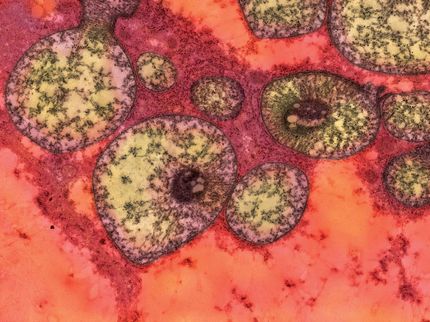UF-led effort creates virus reference standard that can improve patient safety in clinical trials
The use of viruses as vehicles for delivering genes to replace malfunctioning or missing ones holds promise for treating many disorders. Adeno-associated viruses are one type of vector being used increasingly in human gene therapy clinical trials and laboratory studies leading up to those trials. But differences in the way researchers determine the administered doses have made it difficult to accurately compare results from various studies.
Now a University of Florida scientist has led the first successful international effort to create a reference standard for recombinant adeno-associated virus type 2 vectors called rAAV2, which have been used in the treatment of diseases such as hemophilia and a certain kind of blindness.
Researchers from around the world can now report their measurements relative to the reference standard so that others can gauge how effective a given virus preparation is at delivering a gene in an animal study or clinical trial.
“These vectors are powerful and have the potential to be used widely in humans, so being able to determine a dose reliably, and a dose that means something to other labs, is important,” said Richard Snyder, Ph.D., an associate professor of molecular genetics and microbiology in the UF College of Medicine and director of UF’s Center for Excellence for Regenerative Health Biotechnology, who led the reference standard effort. “The more you understand the dose you’re giving, the more confidence you have that the doses are safe.”
Standardization of vector doses will help make regulatory policy more robust and help pharmaceutical manufacturers ensure their doses are prepared safely.
“It allows the field to advance in significant ways,” said Jeff Beecham, Ph.D., director of the Vector Laboratories at the University of North Carolina’s Gene Therapy Center and a collaborator on the project.
The rAAV2 system was pioneered by UF College of Medicine scientists Nicholas Muzyczka, Ph.D., eminent scholar of molecular genetics & microbiology and founding director of the UF Powell Gene Therapy Center, and Kenneth Berns, M.D, Ph.D., a distinguished professor of molecular genetics and microbiology and director of the UF Genetics Institute. Over the past two decades several distinguished UF researchers have used the system successfully in treating animal models of disease and conducting initial work in humans.
Creation of the reference standard was the result of a vast multidisciplinary, international partnership that began in 2002 and involved the U.S. Food and Drug Administration, National Institutes of Health, 23 universities and 12 industry organizations in nine countries. The group planned and solicited grants and donations of money, materials and time. UF scientists manufactured the standard at the Powell Gene Therapy Center, and collaborators from 16 laboratories worldwide characterized its purity, chemical properties and potency. Vials of the vector solution, banked at the America Type Culture Collection in Virginia, became available to laboratories worldwide starting in January.
“Once people start using the reference it will allow comparisons across hundreds of labs,” Beecham said. “If someone reports a certain result, everyone else can immediately cross-calculate with what they’re getting to see if it is comparable. It really allows standardization across many different studies.”
The standard will be of particular value in cases where researchers report exciting or controversial findings because it allows others to duplicate experiments. The researchers have published descriptions of their effort to produce the standard in the journal Molecular Therapy and in the BioProcessing Journal.
These products might interest you
See the theme worlds for related content
Topic world Gene therapy
Genetic diseases once considered untreatable are now at the center of innovative therapeutic approaches. Research and development of gene therapies in biotech and pharma aim to directly correct or replace defective or missing genes to combat disease at the molecular level. This revolutionary approach promises not only to treat symptoms, but to eliminate the cause of the disease itself.

Topic world Gene therapy
Genetic diseases once considered untreatable are now at the center of innovative therapeutic approaches. Research and development of gene therapies in biotech and pharma aim to directly correct or replace defective or missing genes to combat disease at the molecular level. This revolutionary approach promises not only to treat symptoms, but to eliminate the cause of the disease itself.
























































